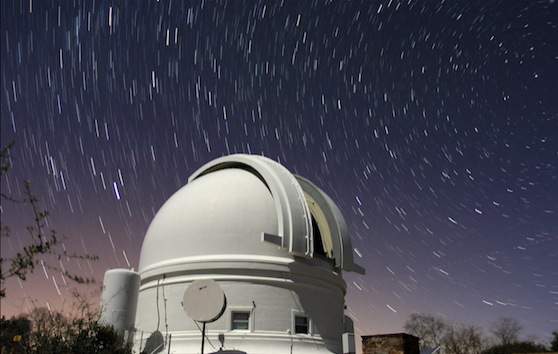
The Zwicky Transient Facility Begins Nightly Concurrent Observations of TESS Northern Fields

As a service to the astronomical community, the Zwicky Transient Facility (ZTF) will conduct a nightly public survey of all 13 TESS northern sectors in 2019-2020. ZTF will observe the portions of the TESS sector visible from Palomar each night. Each ZTF pointing will have one exposure each with g and r filters, totaling two images per night. The observations of the first northern sector, Sector 14, have begun on July 18, 2019. The majority of this sector will be covered by ZTF, except for a portion of TESS Camera 4, due to the visibility limits.
ZTF has a FOV of 55.0 square degrees and a light sensitive area of 47.7 square degrees within that FOV. A TESS sector can be completely covered with about 60 ZTF fields. ZTF has 1" pixels (2" PSF) compared to the TESS 21" pixels (50% enclosed flux). Consequently, ZTF observations will allow identification of transient and variable sources within a TESS pixel, particularly important if more than one source is contributing to the variable flux. In addition, ZTF goes deeper than TESS, having a median 5 sigma limiting magnitude of 20.6 in r-band and 20.8 in g-band. This allows identification of weak sources that may be contributing to the TESS measured flux. ZTF g- and r-band measurements will complement TESS 600-1000nm observations, allowing estimates of temperature and other spectral characteristics.
Because ZTF alerts are issued nightly, they can identify transient and variable sources that are active, allowing ground-based follow-up by the community on a prompt timescale, faster than the timescale on which TESS full-frame data is typically available.
In addition to the ZTF alert streams provided by various alert brokers, all ZTF-TESS alerts will be released nightly to the public via ZTF's bucket on Google Cloud in a compressed tarball with the alert packets converted into JSON format. ZTF alerts in the TESS fields will have the keyword "programpi" in the candidate block set to "TESS". Details on how to access these alerts are given in the this Jupyter notebook. ZTF-TESS alerts will also be cross-matched against a number of external catalogs, including 2MASS PSC, AllWISE, IPHAS DR2 and Gaia DR2. Finally, we note that no filtering is applied to the ZTF-TESS alerts prior to their public release.
We anticipate that ZTF light curves for all objects observed concurrently by TESS and ZTF will be made available publicly within one month of the end of a TESS sector observation campaign. Details on how to access the ZTF light curve data will be given in the same Jupyter notebook as mentioned above. We also anticipate that ZTF will soon add additional nightly g- and r-band observations of denser stellar regions (e.g. near the Galactic Plane) in order to better facilitate variability studies of Galactic objects.
Supernova candidates identified using a combination of automated filters and human vetting will be automatically posted to the Transient Name Server (TNS) at with the "sender" keyword set to "ZTF_TESS". These will include bright (<19 mag) candidates, which are also selected by the ongoing ZTF Bright Transient Survey (BTS; ATEL #11688). We encourage spectroscopic followup of these candidates as quickly as possible to maximize the potential science return from the ZTF-TESS combination.
- Date: July 27th, 2019
- Category: Project News
- View Image
- Image Caption: The 48-inch Samuel Oschin Telescope at Mt. Palomar


